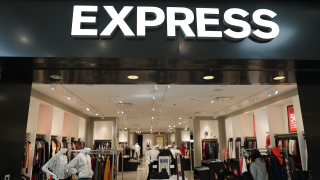The relationship between art and commerce has always been vexed, but that is especially true for fashion. When fashion attempts to merge an already tense relationship with social consciousness, the delicate fabric verges on tearing.
As Washington Post fashion critic Robin Givhan recently noted, a double standard exists where fashion, unlike other artistic fields like music, film, dance, and theater is not given the space to use art to address social issues while simultaneously dealing with commerce.
But fashion should have the right to make art, make money and make social change. Still, addressing double standards with regards to social issues must start at home, as there appears to be an unevenness in the responsibility of who is speaking up about racism in fashion and also in how those in fashion who are vocal on social issues are responded to in the industry.
On September 10, just days into New York Fashion Week, designer Kerby Jean-Raymond of fashion house Pyer Moss, presented a runway show that wedded fashion, graffiti art, and video to address the issue of police brutality. The show featured a faux blood splattered runway, models wearing jackets and shoes with the phrase “I can’t breathe” — the last words of Eric Garner, who died at the hands of the NYPD — scribbled upon them, and a 10-minute film with interviews with the families of Mike Brown and Sean Bell, two other unarmed Black men who were killed by police…
The public was made aware of plans for the Pyer Moss show several weeks before, following a now-viral column by Givhan in which she noted Jean-Raymond’s intention to use his fashion show to address police brutality.
With the Black Lives Matter movement ongoing and addressing the many deaths of Black women, men, and children being killed with impunity in the United States, Jean-Raymond’s intervention is timely. And working in a medium where politicized positions of any kind are dismissed, looked at as a gimmick, or criticized for courting controversy and endangering profit, Jean-Raymond deserves admiration.
But instead, Pyer Moss has been negatively impacted since news of his plans for the show broke. The company reportedly lost a venue for its fashion show, and also a retailer in Europe who has placed garment orders with it for the last three seasons.
While one may argue that we have no way of knowing the exact reasons for this bad turn, it’s impossible not to wonder if Jean-Raymond and his brand are being punished for speaking a truth that Ferguson, New York, and Baltimore have already told. Police brutality, and anti-Black violence remain a problem, and silence is not a solution or option.
When we see Pyer Moss losing venues plus a retailer after taking a bold artistic leap for social justice, and Jean-Raymond noting his reluctance to risk his brand for such an intervention in the future, the fashion industry should consider how problematic this is and what it says about the industry.
In recent years the fashion industry has been criticized (and rightfully so) for its lack of racial diversity on runways, print and audiovisual media, and design houses.
Most memorably, during 2013 New York Fashion Week, fashion icons Iman, Naomi Campbell and Bethann Hardison authored an open letter in which they provided details about the many fashion houses that use only one or no models of color on the runways. They argued that regardless of intention the result is racism.
Also, fashion legend Andre Leon Talley and supermodels Jourdan Dunn and Joan Smalls — all of African descent — have also been vocal about racism in fashion. It would be a big step forward if more people who are not Black or other people of color in the industry would step outside of their own racial and ethnic privilege and speak out about such issues in a sustained way.
Such a shift could move discussions about racism in fashion from the perennial controversy that bubbles up during fashion week, only to cool down until the next example of the lack of diversity is so clear it cannot be ignored.
The day after Jean-Raymond’s show, Riccardo Tisci, creative director at Givenchy, joined forces with world-renowned performance artist Marina Abramovic to give a fashion show in Lower Manhattan on Sept. 11, 2015, the 14th anniversary of the attacks on the World Trade Center.
Abramovic, in an open letter about the show, wrote it was about “forgiveness, inclusivity, new life, hope, and above all, love.” Like Jean-Raymond’s show, the Givenchy show was positively reviewed by fashion critics and enthusiasts, all of whom noted how wonderful the show was for its poignancy, beauty, spirit, and of course, the clothes. There was no talk the next day about Givenchy losing retail space or losing a venue over such an important statement.
Jean-Raymond produced a show that also asked us to never forget: That is, to never forget names like Rekia Boyd, Mike Brown, Eric Garner, Freddie Gray or the many others who have died because of police brutality, and to do whatever we can wherever we are to make sure another name is not added to the list.
Eric Darnell Pritchard is an assistant professor at the University of Illinois at Urbana-Champaign. He writes and teaches about the intersections of race, gender, and sexuality with fashion, popular culture and language. Follow him on twitter @glamourtunist.













